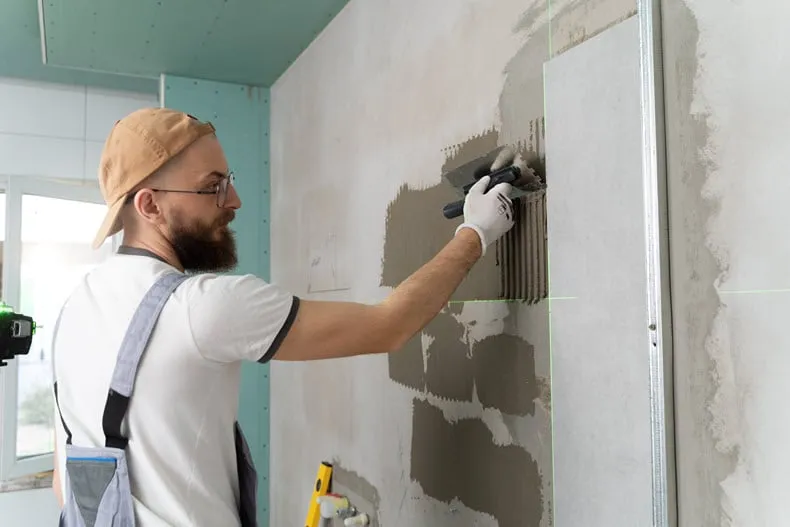Sharing is Caring!
Homes can appear well-maintained, but hidden, costly home repairs often lurk behind walls, beneath floors, and within appliances. Identifying these issues early can prevent expensive repairs, enhance safety, and maintain the property’s overall value. Awareness and proactive maintenance help homeowners stay ahead of potential damage.
As a homeowner, it’s essential to learn about these costly home repairs before they wreak havoc on your wallet. If you are a new homeowner, it’s a good idea to know what home repairs to watch and prep for.
How To Avoid Costly Home Repairs
Of course, we all want to avoid costly home repairs, and staying ahead of these issues can save you lots of money and time.
Moreover, catching minor problems before they spiral into major, expensive disasters is always a smart way to protect our homes.
Furthermore, you’ll want to focus on your home’s most failure-prone systems. For example, things like your roof, foundation, plumbing, and HVAC can end up costing you a fortune without preventive measures. Taking preventive steps to avoid costly home repairs is always in your best interest.
Fortunately, you can do simple, regular tasks like cleaning your gutters at least twice a year. Things like clogged gutters can lead to water damage on your roof and siding, so inspecting them is essential.
And even your foundation, which is among the costliest repairs a homeowner faces.
Be Diligent
Ideally, you want to be diligent about inspecting for issues like missing roof shingles, checking seals around windows and doors. Ensure you inspect the area under sinks for minor leaks and address them promptly.
In addition to self-inspection, professional servicing and financial preparedness are crucial for long-term savings. Schedule annual professional HVAC tune-ups to ensure optimal efficiency and extend the unit’s lifespan.
Additionally, remember to change the air filters every one to three months. I change my HVAC filter once a month.
Doing this helps keep my brand-new system in tip-top shape.
Regarding plumbing and electrical systems, consider periodic professional check-ups. In older homes, be even more diligent, as hidden issues can lead to catastrophic damage.
Finally, mitigate the financial stress of an inevitable major repair by creating a dedicated home maintenance fund. Of course, this is a great idea, and you can set aside at least 1% of your home’s value each year. In doing so, this combination of diligent care and financial cushioning turns potential budget-busting surprises into manageable inconveniences.
Costly Home Repairs: Water Damage and Leaks
Water is one of the most common hidden threats in homes, and you can end up with unanticipated, costly home repairs.
Leaks from pipes, roofs, or appliances can go unnoticed for months. Even small drips can lead to mold growth, weakened structural components, and unpleasant odors.
Checking under sinks, behind washing machines, and around rooflines can reveal early signs of moisture problems. Moisture meters or thermal imaging devices can also help detect leaks that are not visible to the naked eye.
Water damage and leaks can turn into costly home repairs, so it’s a good idea to stay ahead of these issues. Don’t take small drips for granted.
When you notice mold growth, contact your local maintenance company promptly to address the problem.
Electrical Hazards
We can often overlook costly home repairs, such as old or improperly installed wiring. Flickering lights, tripped breakers, and outdated outlets are signs that electrical systems may need attention.
Faulty wiring increases the risk of fire and can damage sensitive electronics. Hiring a licensed electrician to inspect your home periodically ensures that the wiring meets current safety standards and reduces the likelihood of electrical accidents.
Foundation and Masonry Concerns
Foundation cracks and deteriorating brickwork may not be immediately apparent, but they can compromise the structural integrity of a home. Small cracks often appear first around doors, windows, or basements.
Consulting a professional for an inspection can determine if repairs are needed. Tuckpointers can restore mortar joints in brickwork, preventing water infiltration and further damage while maintaining the home’s appearance.
HVAC and Ventilation Issues
Heating, ventilation, and air conditioning systems can hide problems that affect air quality and efficiency.
Dirty filters, blocked ducts, and worn components reduce airflow and increase energy costs.
Regular inspection and maintenance of HVAC systems improve comfort, extend equipment life, and prevent potential health risks caused by poor indoor air quality.
Pest Infestations Can Lead To Costly Home Repairs
Rodents, termites, and insects often remain unseen until significant damage has occurred. Signs such as droppings, chewed wires, or small holes in wood can indicate the presence of infestations.
Early detection and preventive measures are a great way to avoid costly home repairs. For example, sealing entry points and treating vulnerable areas protects both the structure of the home and the health of its occupants.
Consistent inspections help homeowners avoid costly surprises. Being proactive rather than reactive keeps homes safe, efficient, and comfortable for years.
Recognizing hidden issues before they escalate ensures that minor repairs do not turn into major expenses.
Look over the infographic below for more information.
Sharing is Caring!
Disclaimer: This story is auto-aggregated by a computer program and has not been created or edited by jennertrends.
Publisher: Source link













